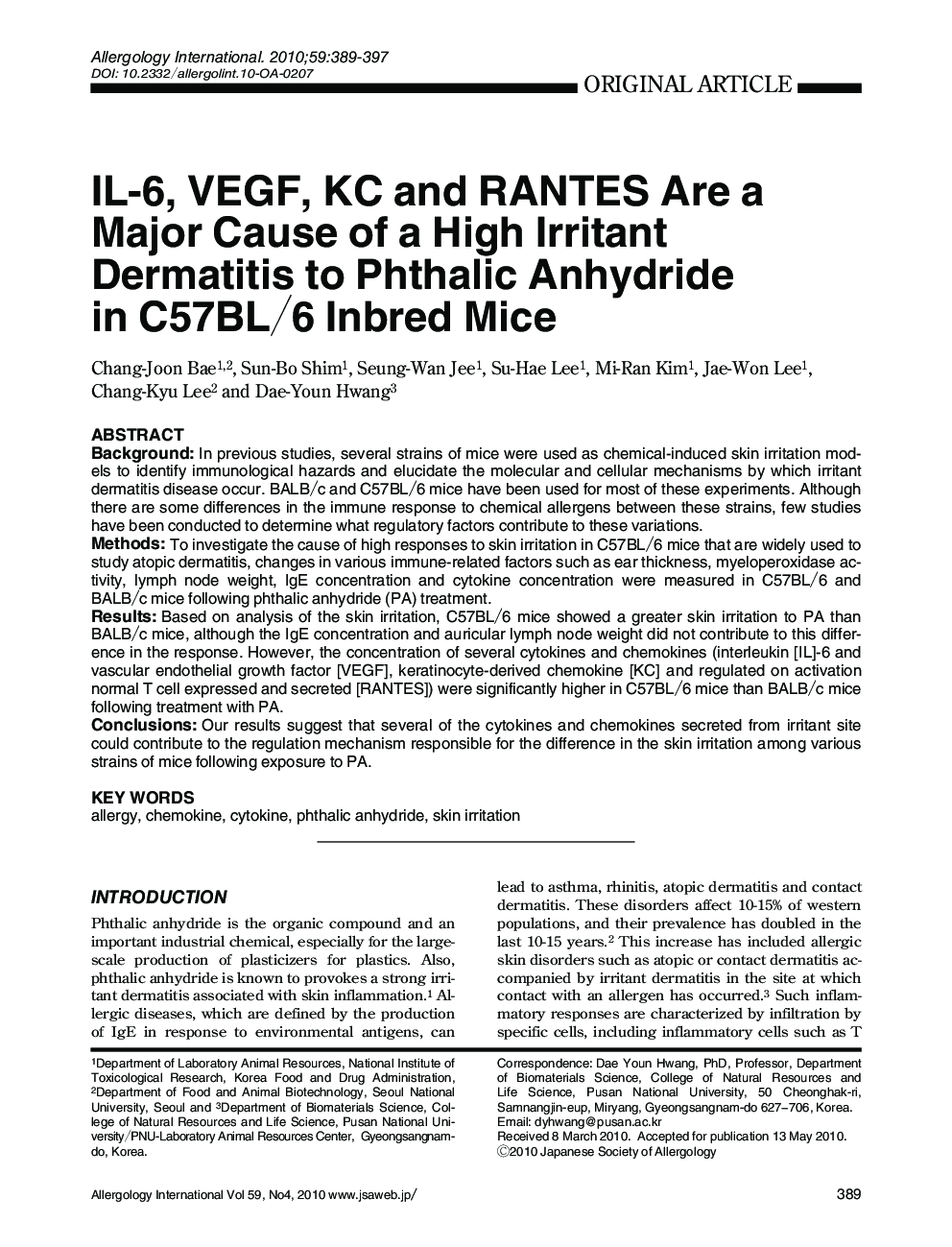| کد مقاله | کد نشریه | سال انتشار | مقاله انگلیسی | نسخه تمام متن |
|---|---|---|---|---|
| 3340936 | 1214080 | 2010 | 9 صفحه PDF | دانلود رایگان |

ABSTRACTBackgroundIn previous studies, several strains of mice were used as chemical-induced skin irritation models to identify immunological hazards and elucidate the molecular and cellular mechanisms by which irritant dermatitis disease occur. BALB/c and C57BL/6 mice have been used for most of these experiments. Although there are some differences in the immune response to chemical allergens between these strains, few studies have been conducted to determine what regulatory factors contribute to these variations.MethodsTo investigate the cause of high responses to skin irritation in C57BL/6 mice that are widely used to study atopic dermatitis, changes in various immune-related factors such as ear thickness, myeloperoxidase activity, lymph node weight, IgE concentration and cytokine concentration were measured in C57BL/6 and BALB/c mice following phthalic anhydride (PA) treatment.ResultsBased on analysis of the skin irritation, C57BL/6 mice showed a greater skin irritation to PA than BALB/c mice, although the IgE concentration and auricular lymph node weight did not contribute to this difference in the response. However, the concentration of several cytokines and chemokines (interleukin [IL]-6 and vascular endothelial growth factor [VEGF], keratinocyte-derived chemokine [KC] and regulated on activation normal T cell expressed and secreted [RANTES]) were significantly higher in C57BL/6 mice than BALB/c mice following treatment with PA.ConclusionsOur results suggest that several of the cytokines and chemokines secreted from irritant site could contribute to the regulation mechanism responsible for the difference in the skin irritation among various strains of mice following exposure to PA.
Journal: Allergology International - Volume 59, Issue 4, 2010, Pages 389-397